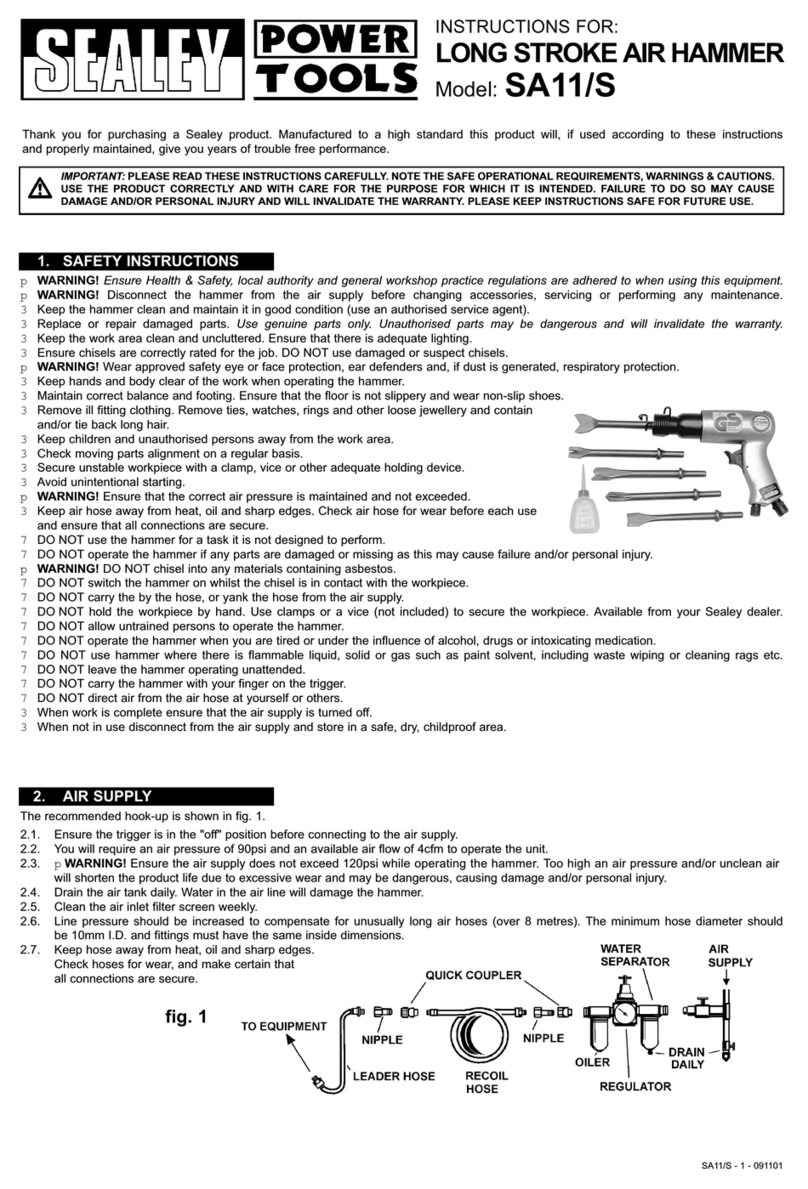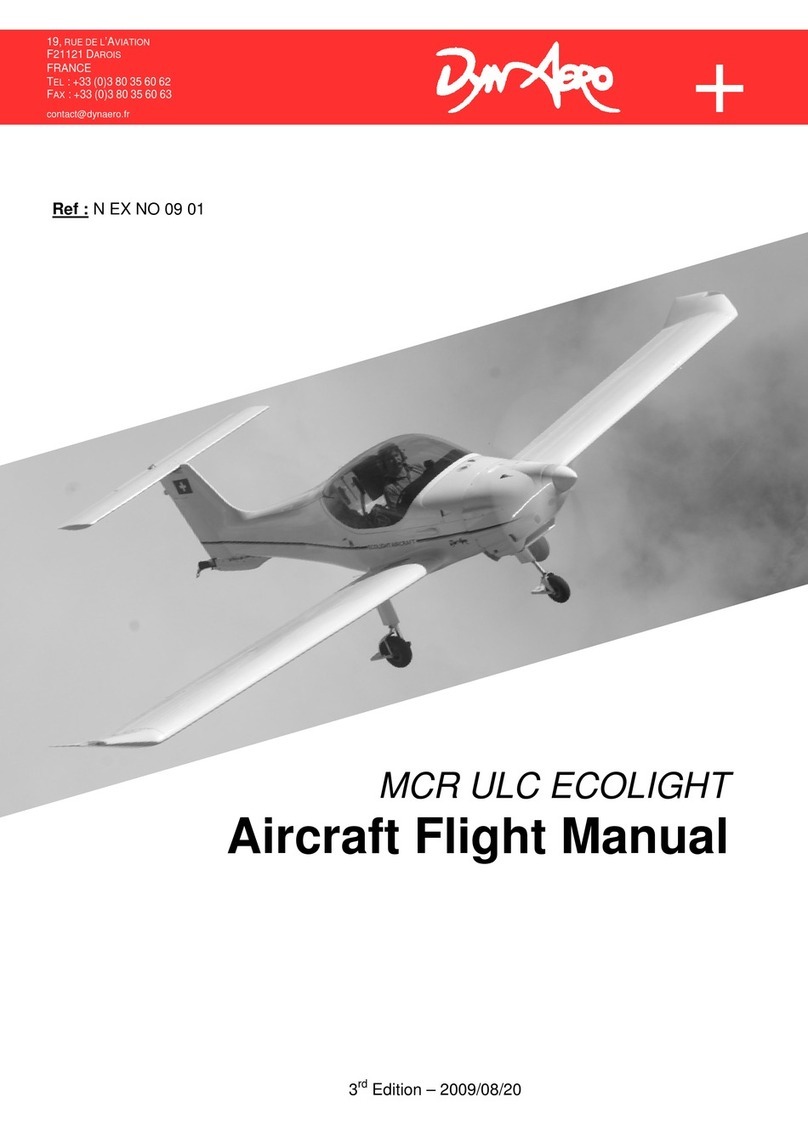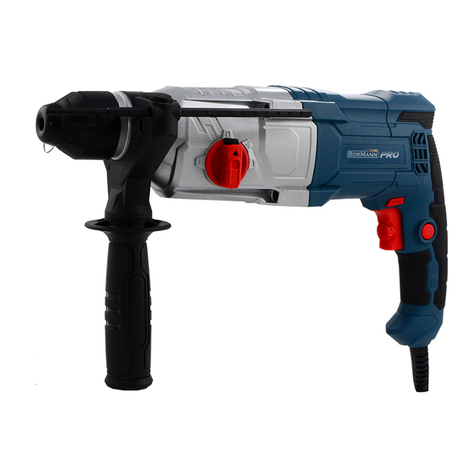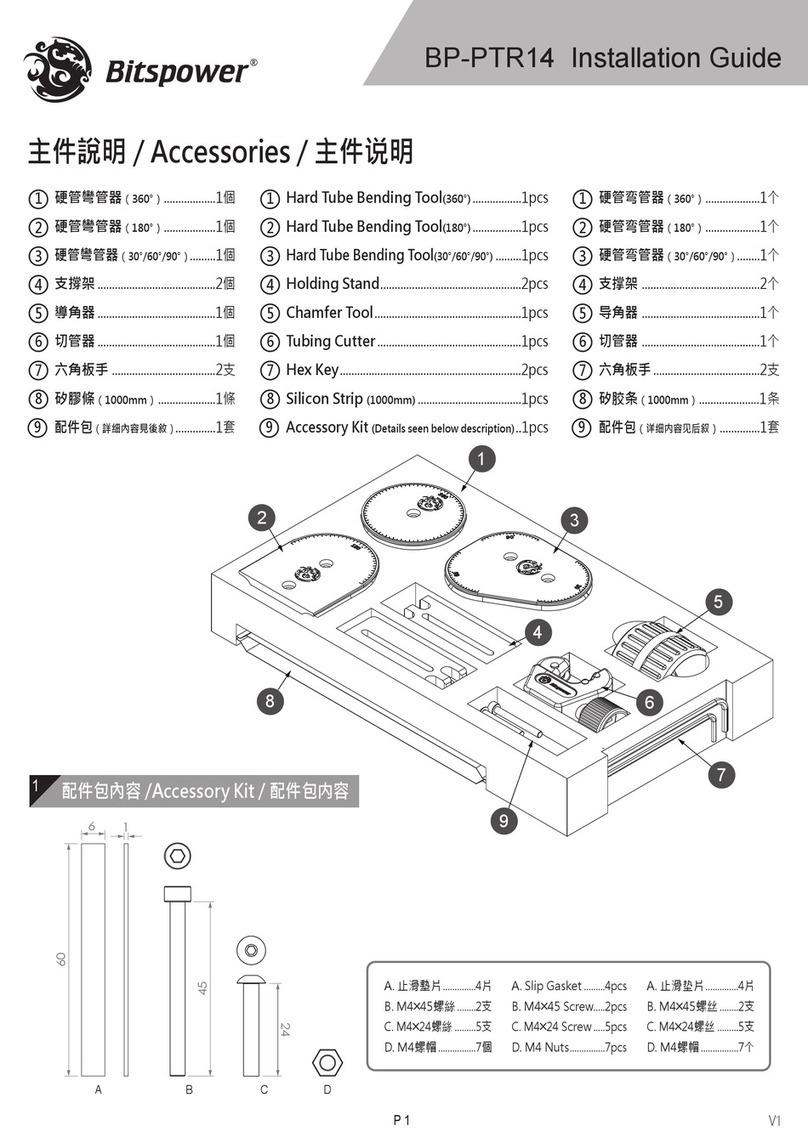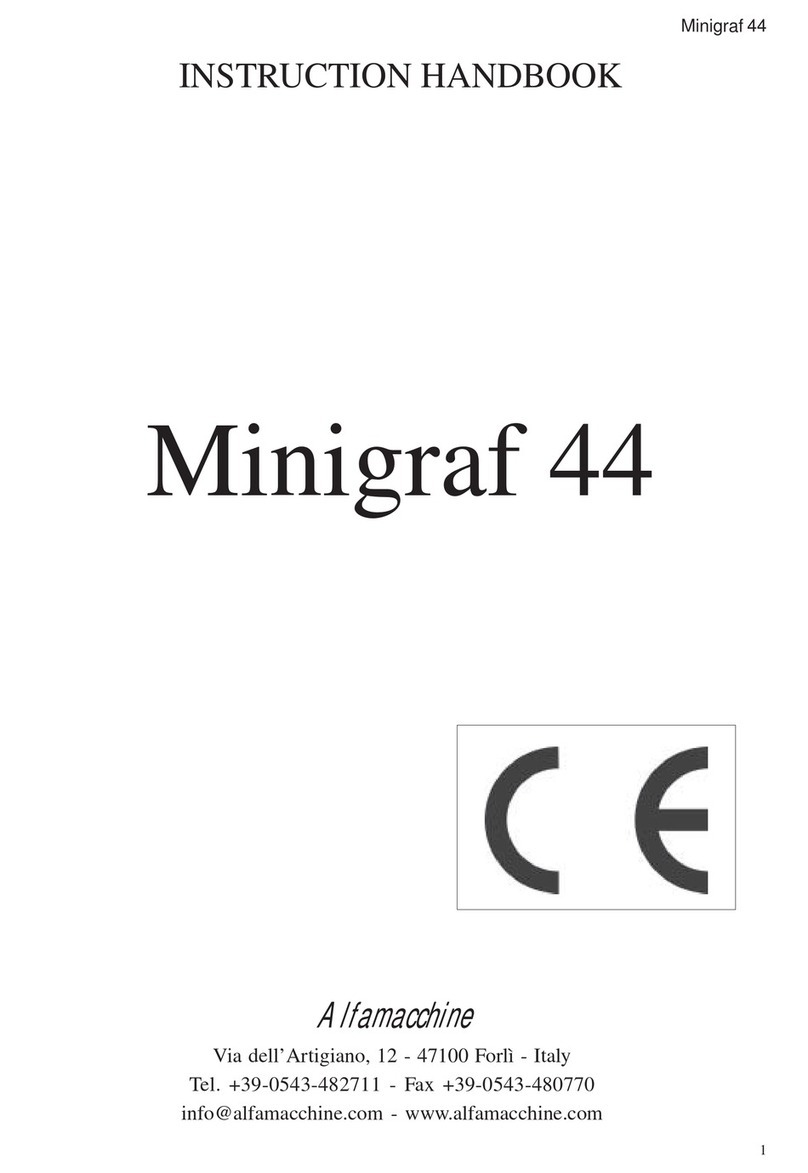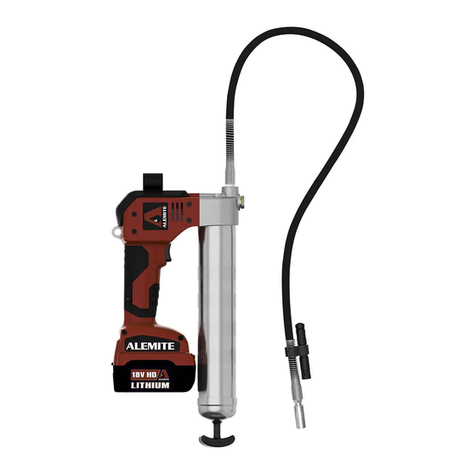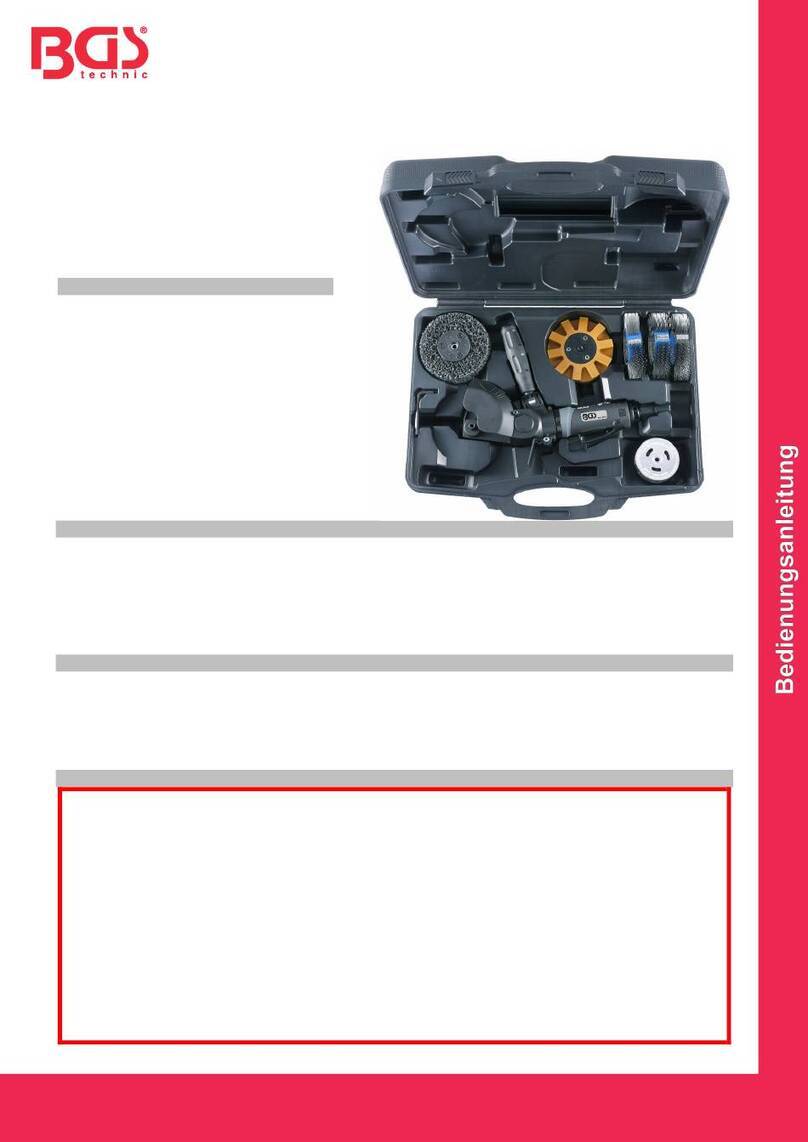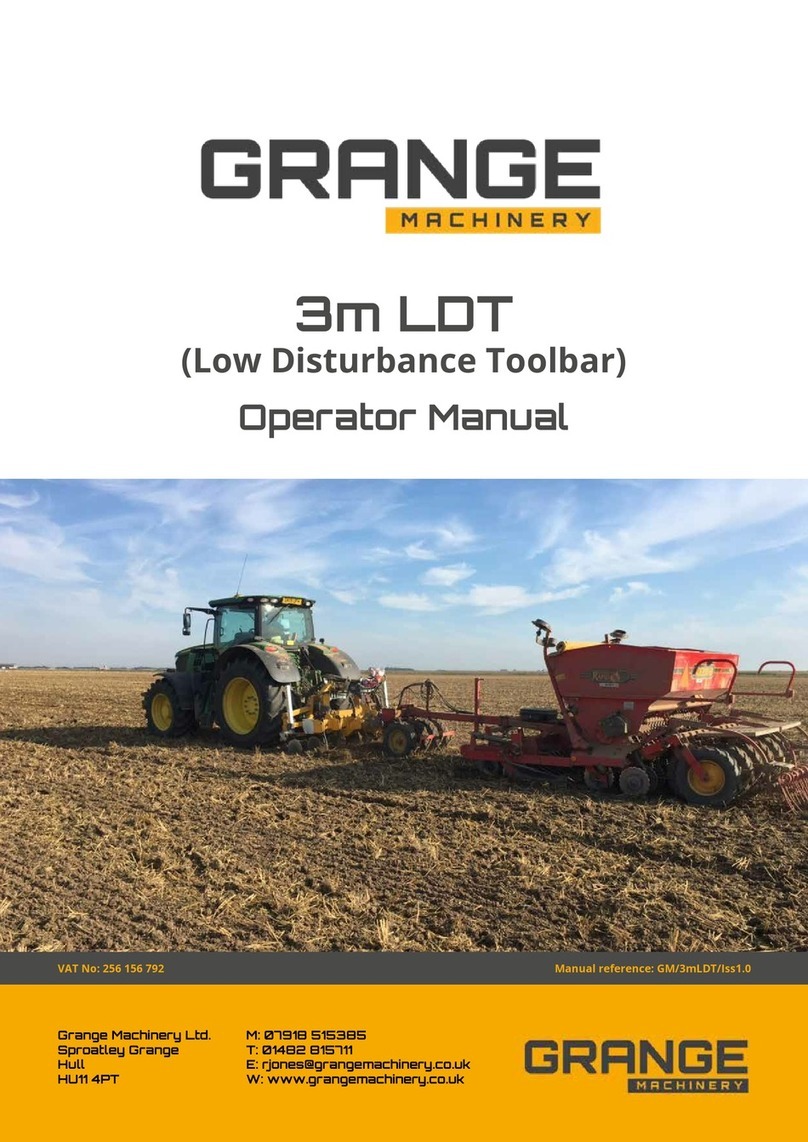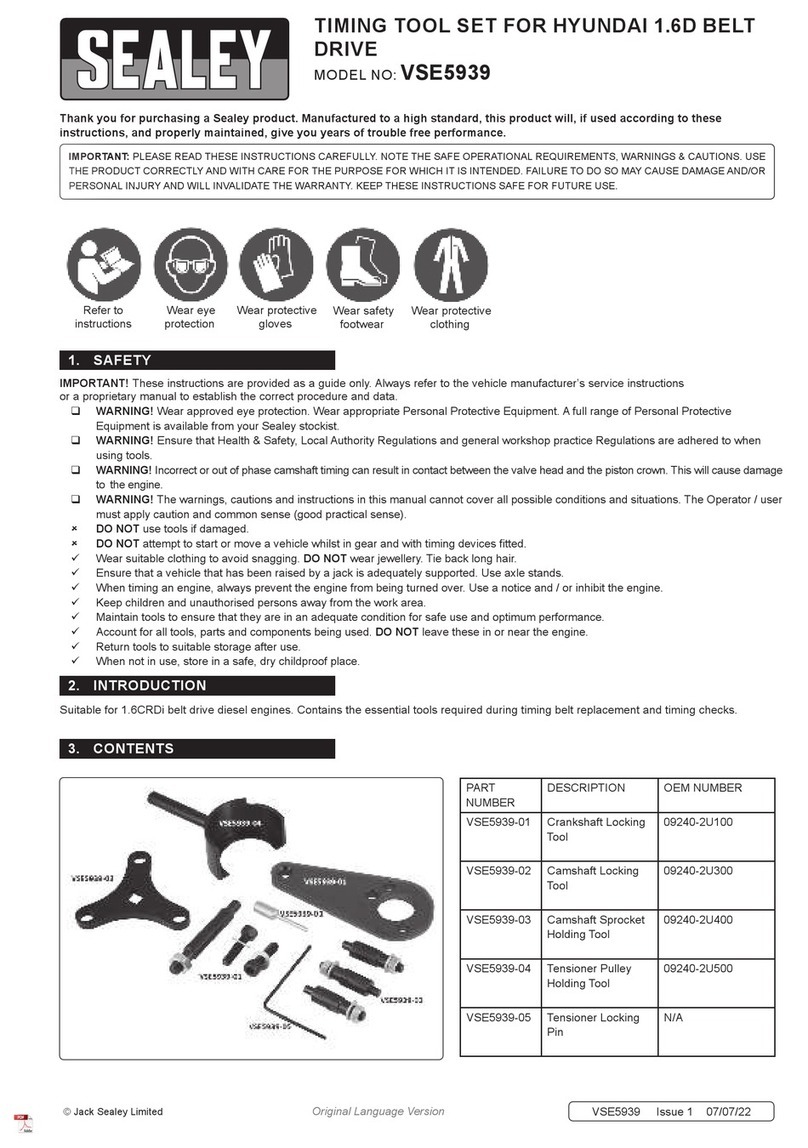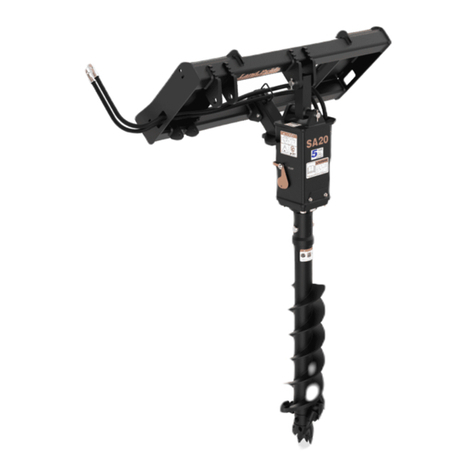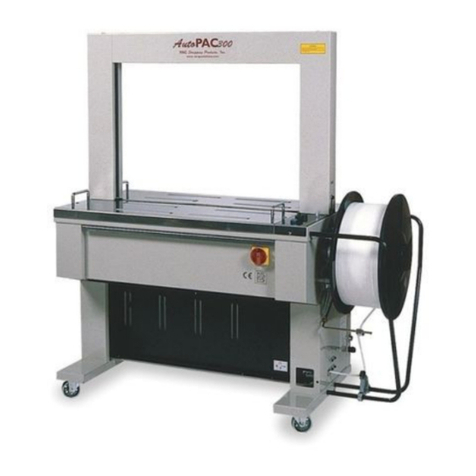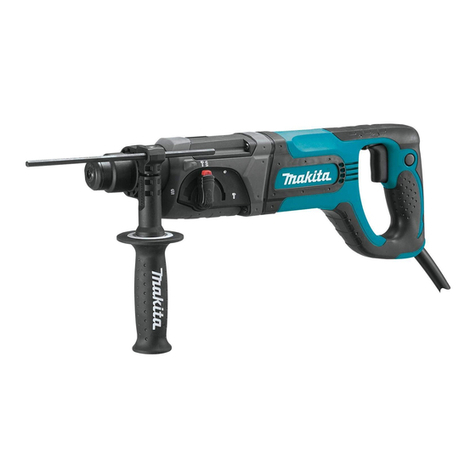Prolux 900105 User manual

Originalbetriebsanleitung
Original operating instruction
Pro-Abschleppstange / Professional tow bar
Art.-Nr.: / Code no.: 900105
Deutsch S. 2-7
p. 12-17Français
English p. 7-12
DE
EN
FR

2Deutsch Originalbetriebsanleitung – Pro-Abschleppstange
Deutsch - Artikel.-Nr.: 900105
Inhaltsverzeichnis
Lieferumfang
Überprüfen Sie vor dem ersten Gebrauch alle Teile der Pro-Abschleppstange auf Schäden und kontrollieren
Sie den Lieferumfang auf Vollständigkeit.
- Stange A mit Sicherheitshaken
- Stange B mit Kugelkupplung
- Stange C mit Sicherheitshaken
- Mittelstück D
- Transporttasche
- Originalbetriebsanleitung
A. Stange ca. 85 cm mit Sicherheitshaken B. Stange ca. 91 cm mit Kugelkupplung
C. Stange ca. 29 cm mit Sicherheitshaken D. Mittelstück ca 82 cm
Spezikationen
Max. Zugkraft [kg]: 3500
Nutzlänge max. [m]: 2
Verriegelung: Kugelkupplung/Sicherungshaken
Gewicht [kg]: 15
Material: Stahl, rot pulverbeschichtet
Lieferumfang
Spezikationen
Grundlegende Hinweise
Bestimmungsgemäße Verwendung
Nicht erlaubt
Organisatorische Maßnahmen und Sicherheit
Inbetriebnahme
Wartung
Instandsetzung
Wiederkehrende Prüfungen
Garantie
2
2
3
3
3
4
5
6
6
7
7

3
Deutsch
Originalbetriebsanleitung – Pro-Abschleppstange
Grundlegende Hinweise
Es ist dringend erforderlich, dass Sie vor der ersten Benutzung die Originalbetriebsanleitung vollständig lesen
und alle Hinweise und Angaben genauestens beachten.
Die Betriebsanleitung ist bis zur Stilllegung des Produktes für den Benutzer bereitzustellen.
Alle Angaben beziehen sich auf neuwertige Produkte.
Wenn Sie Schutzeinrichtungen entfernen oder verändern oder bauliche Veränderungen vornehmen entfällt
jegliche Haftung des Herstellers.
Diese Betriebsanleitung entspricht dem Stand der Auslieferung des Produkts. Für unrichtige Angaben und
Produktbeschädigungen aufgrund unsachgemäßen Gebrauchs übernimmt ProLux Systemtechnik GmbH &
Co. KG keine Haftung.
Bestimmungsgemäße Verwendung
Die ProLux Pro-Abschleppstange ist geeignet um Personenkraftwagen mit serienmäßigen Kugelkopfkupp-
lungen und Abschleppösen abzuschleppen. Das bedeutet das Verbringen eines betriebsunfähigen Kraftfahr-
zeugs zur nächsten geeigneten Werkstatt. Das Abschleppen muss auf kürzestem Wege geschehen.
Die maximale Zugkraft der Abschleppstange von 3500 kg darf nicht überschritten werden.
Verwenden Sie die Abschleppstange nur für die in dieser Betriebsanleitung beschriebenen Zwecke.
Jeder anderweitige Gebrauch gilt als nicht bestimmungsgemäß
Nicht erlaubt
- Die Zündung des abgeschleppten Fahrzeugs muss während des Abschleppens immer eingeschaltet sein.
Schalten Sie niemals während der Fahrt die Zündung aus, da sonst das Lenkradschloss einrastet und es zu
schweren Verkehrsunfällen kommen kann.
- Überschreiten Sie die zulässige Höchstlast der Abschleppstange von 3500 kg nicht. Eine Überbelastung
kann zum Bruch der Stange führen und es besteht die Gefahr eines Auffahrunfalls.
- Die Abschleppstange darf nicht zum Schieben verwendet werden.
- Nur zum Abschleppen (betriebsunfähiges Fahrzeug), nicht zum Bergen verwenden!
- Das abzuschleppende Fahrzeug darf nicht schwerer als das abschleppende Fahrzeug sein.
- Mit einem abzuschleppenden Fahrzeug darf nicht auf eine Autobahn aufgefahren werden.
- Nach StVO darf grundsätzlich nur ein Fahrzeug gleichzeitig abgeschleppt werden. Das heißt, am
abgeschleppten Fahrzeug dürfen auch keine Anhänger angebracht sein.
- Ein Abschleppen von Fahrzeugen mit nicht funktionsfähiger Bremsanlage ist im öffentlichen Straßenverkehr
nicht erlaubt.
- Die max. Abschleppgeschwindigkeit ergibt sich aus den gesetzlichen Vorschriften Ihres Landes!
Überschreiten Sie die max. zulässige Geschwindigkeit niemals!
- Fahrzeuge mit Automatikgetriebe dürfen in der Regel nicht abgeschleppt werden. Informieren Sie sich hierzu
in der Betriebsanleitung Ihres Fahrzeuges.
- Führen Sie an der Abschleppstange keine Oberächenbehandlungen mit materialschädigender Wirkung
durch. Dazu zählen unter anderem Wärmebehandlungen, Schweißungen und das Anbringen von Bohrungen
etc.

4
Organisatorische Maßnahmen und Sicherheit
Allgemeines
Bei jedem Abschleppvorgang ist äußerste Vorsicht ist geboten. Seien Sie sich bewusst, dass ein
Abschleppvorgang keine alltägliche Verkehrssituation darstellt. Fahren Sie stets langsam und kontrolliert.
- Der Fahrzeuglenker des abgeschleppten Fahrzeuges muss in Deutschland nicht im Besitz einer
Fahrerlaubnis sein. Er muss aber geistig und körperlich geeignet und des Lenkens kundig sein. (Bitte
abweichende Vorschriften in Ihrem Land beachten!)
- Die Abschleppstange muss gemäß § 47 Abs. 1 BGV D29 in Abhängigkeit zu der Gesamtmasse des
Zugfahrzeuges und des zu ziehenden Fahrzeuges ausgewählt werden.
- Es dürfen nur brems- und rollfähige Fahrzeuge abgeschleppt werden.
- Wird ein Fahrzeug auf einer Autobahn abgeschleppt, muss diese an der nächsten Abfahrt verlassen werden.
Es darf auch nicht auf Autobahnen aufgefahren werden (§ 15a StVO).
- Zwischen den beiden Fahrzeugen müssen die Sichtverhältnisse so sein, dass die Rück- und Bremsleuchten
des Zugfahrzeuges aus dem geschleppten Fahrzeug heraus beobachtet werden können.
- Beim Lenken und Bremsen eines abgeschleppten Fahrzeugs sind die erhöhten Lenk- und Bremskräfte zu
beachten (durch Ausfall der Lenk- und Bremsunterstützung)!
- Das abgeschleppte Fahrzeug muss vorschriftsmäßig beleuchtet werden. Gegebenenfalls muss eine
Folgebeleuchtung montiert werden.
Anbringen der Abschleppstange
- Bringen Sie die Abschleppstange nur an den dafür vorgesehenen Abschleppösen oder Kugelkopfkupplungen
am Fahrzeug an. Informationen zu geeigneten Aufnahmepunkten nden Sie in der Betriebsanleitung des
Fahrzeugherstellers.
- Überzeugen Sie sich vor dem Abschleppvorgang davon, dass die Abschleppösen oder Kugelkopfkupplungen
in einwandfreiem Zustand sind.
- Achten Sie beim Anbringen der Abschleppstange auf Ihre Hände. Es besteht die Gefahr von Quetschungen.
- Sichern Sie betriebsunfähige Fahrzeuge im Gefälle gegen Wegrollen (§ 55 Abs. 1 BGV D29)
- Achten Sie auf die sichere Verbindung zwischen den Fahrzeugen. Beginnen Sie den Abschleppvorgang nur,
wenn beide Fahrzeuge sicher miteinander verbunden sind.
- Die Haken der Abschleppstange möglichst von oben nach unten in die Abschleppösen einhängen.
- Auf die erforderliche Freigängigkeit der Abschleppstange ist zu achten.
- Die Abschleppvorrichtungen der Fahrzeuge, an denen die Abschleppstange befestigt werden soll,
müssen ausreichend stark dimensioniert sein. Informieren Sie sich deshalb anhand der Betriebsanleitung
des Fahrzeugherstellers oder in einer Fachwerkstatt, ob die Aufnahmepunkte für den Einsatz dieser
Abschleppstange geeignet sind. Die Abschlepp-stange ist für scharfkantige, für im Querschnitt zu gering
dimensionierte (unter 8 mm Durchmesser) und ache Blechösen nicht geeignet.
Fahren
- Beachten Sie beim Abschleppen von Fahrzeugen die Verkehrsregeln des Landes, in dem Sie sich benden.
- Beim Rückwärtsfahren/Rangieren sollte die Hilfe eines Einweisers in Anspruch genommen werden (§ 46
BGV D29).
- Während des Abschleppvorgangs müssen gemäß § 15a StVO beide Fahrzeuge das Warnblinklicht
einschalten.
- Die Abschleppstange sollte während der Fahrt ungefähr waagerecht sein.
- Die Anfahr- und Abbremsvorgänge sind mit angemessener Vorsicht durchzuführen, nach Möglichkeit sollten
beide Fahrzeuge gleichzeitig bremsen. Die Abschleppstange und die Aufnahmepunkte an den Fahrzeugen
sind nicht in der Lage extreme Belastungen durch auftretende Schubkräfte sicher aufzunehmen!
Abhängen
- Vor dem Abbau der Abschleppstange sind beide Fahrzeuge gegen Wegrollen zu sichern. Feststellbremsen
betätigen.
Deutsch Originalbetriebsanleitung – Pro-Abschleppstange

5
Inbetriebnahme
Anhängen
1. Fahren Sie das abschleppende Fahrzeug in einem Abstand von ca. 2,50 Meter an das abzuschleppende
Fahrzeug heran.
2. Verbinden Sie die Einzelteile der Pro-Abschleppstange je nach Ein-satzzweck miteinander. Beachten Sie
hierzu die nachfolgende Abbildung.
3. Haken Sie das Endstück der Abschleppstange in die Abschleppöse oder Kugelkopfkupplung des Zugfahr-
zeuges ein. Haken Sie die End-stücke immer von oben in Abschleppösen ein.
4. Bringen Sie das abzuschleppende Fahrzeug vorsichtig von Hand in eine Position, die es Ihnen erlaubt, die
Abschleppstange mit der Ab-schleppvorrichtung zu verbinden.
5. Beginnen Sie vorsichtig mit dem Abschleppvorgang. Nach wenigen Metern sollte angehalten und kontrol-
liert werden, ob die Abschleppstange korrekt montiert ist. Ist dies der Fall, können Sie den Abschleppvor-
gang fortsetzen.
Kombinationsmöglichkeiten und max. Abschleppgewichte:
A. + D. + C. Anwendbar, wenn beide Fahrzeuge mit den serienmäßigen Abschleppösen
ausgerüstet sind. Abschleppgewicht max. 3,5 t.
B. + D. + C. Anwendbar, wenn das Zugfahrzeug mit Anhängervorrichtung ausgerüstet ist.
Abschleppgewicht max. 3,5 t.
Kurvenfahrt
Kürzen Sie in Kurven nicht ab, sonder fahren Sie nach Möglichkeit immer in der Spur
des abschleppenden Fahrzeugs.
Deutsch
Originalbetriebsanleitung – Pro-Abschleppstange

6Deutsch
Geradeaus-Fahrt
Halten Sie die Abschleppstange, soweit der Gegenverkehr dies zulässt, möglichst gerade. Die Abschlepp-
stange sollte im normalen Fahrbetrieb immer parallel zur Längsachse der Fahrzeuge stehen. Somit wird eine
erhöhte Belastung der Aufnahmepunkte an den Fahrzeugen vermieden.
Abhängen – Demontage
1. Kugelkupplung entriegeln und abnehmen/Sicherheitshaken aushängen
2. Fahrzeuge auseinander bewegen
3. Einzelteile auseinanderschrauben.
Wartung
Die ProLux Abschleppstange ist wartungsfrei.
Um Korrosion vorzubeugen sollte die Abschleppstange jedoch nach dem Einsatz in feuchter Umgebung oder
nach starker Verschmutzung stets ge-reinigt und getrocknet werden.
Instandsetzung
Die Instandsetzung einer Abschleppstange darf nur durch sachkundige Personen durchgeführt werden und
unterliegt der Entscheidung des Herstellers!
Versuchen Sie nie, selbst Reparaturen am Produkt auszuführen!
Sollten Zweifel am ordnungsgemäßen Zustand bestehen ist die Abschleppstange für die Inspektion durch
einen Sachverständigen außer Betrieb zu nehmen.
Verwenden Sie das Produkt außerdem nicht, bei:
- Bruch, Verformung, scharfen Kerben bzw. Rissen jeglicher Art
- Verschleiß und übermäßiger Korrosion
Originalbetriebsanleitung – Pro-Abschleppstange

7English
Wiederkehrende Prüfungen
Führen Sie vor jedem Einsatz eine Sichtprüfung durch, um eventuelle Beschädigungen festzustellen.
Beschädigte Abschleppstangen dürfen nicht eingesetzt werden, da die Gefahr eines Bruchs besteht.
Garantie
Die Garantie erlischt bei unsachgemäßer Nutzung des Produkts und wenn die Hinweise dieser Betriebsanlei-
tung nicht beachtet werden. Weitergehende Garantiebestimmungen sind den AGB der ProLux Systemtechnik
GmbH & Co. KG zu entnehmen.
Original operating instruction - professional tow bar
English - Code no.: 900 105
Index
Scope of delivery
Before using the product for the rst time, check all parts of the professional tow bar for damage and check
that the scope of delivery is complete.
- rod A with safety hook
- rod B with ball coupling
- rod C with safety hook
- centre piece D
- transport bag
- original operating instructions
A. rod approx. 85 cm with safety hooks B. rod approx. 91 cm with ball coupling
C. rod approx. 29 cm with safety hooks D. centre piece approx 82 cm
Scope of delivery
Specications
Basic instructions
Intended use
Not allowed
Organisational measures and safety
Start-up
Maintenance
Repair
Periodic inspection
Warranty
7
8
8
8
8
9
9
11
11
12
12

8English Original operating instruction - professional tow bar
Specications
max. tractive force [kg]: 3500
working length max. [m]: 2
locking device: ball coupling/locking hook
weight [kg]: 15
material: steel, red powder-coated
Basic instructions
It is urgently necessary to make sure you have read the original instruction and that all information and
instructions have been taken into account thoroughly before the rst application.
The user has to keep the manual close at hand as long as the product is not shut down. All data refers
to new products.
In case that you remove, change, or make any structural alterations to the protection device,
all liability on the part of the manufacturer is extinguished.
This manual corresponds to the state of the delivery of the product. ProLux Systemtechnik GmbH &
Co. KG cannot be made liable for any incorrect statements and damages of the product occuring due
to non-compliance with the manual.
Intended use
The ProLux professional tow bar is suitable for towing passenger cars with standard ball head couplings and
towing eyes.
This means the transfer of an inoperable motor vehicle to the nearest suitable workshop. Towing must be
carried out by the shortest possible route.
The maximum tactive force of the tow bar of 3500 kg must not be exceeded.
Only use the tow bar for the purposes described in these operating instructions.
Any other use is considered improper use.
Not allowed
- The ignition of the vehicle being towed must always be switched on during towing.
- Never switch off the ignition while driving, otherwise the steering wheel lock will engage and serious trac
accidents may occur.
- Do not exceed the maximum permissible load of the tow bar of 3500 kg. An overload can cause the bar to
break and there is a risk of a rear-end collision.
- The tow bar must not be used for pushing.
- Use only for towing (inoperable vehicle), not for recovery!
- The vehicle to be towed must not be heavier than the towing vehicle.
- Do not drive onto a motorway with a vehicle to be towed.
- According to the StVO, only one vehicle may be towed at a time. This means that no trailers may be attached
to the vehicle to be towed.
- The towing of vehicles with inoperable brakes is not permitted on public roads.
- The maximum towing speed is determined by the legal regulations of your country!
- Never exceed the max. permissible speed!
- As a rule, vehicles with automatic transmission may not be towed. Please refer to the operating instructions
of your vehicle.
- Do not treat the surface of the tow bar in any way that could damage the material.
- This includes, among other things, heat treatment, welding and the drilling of holes etc.

9
English
Original operating instruction - professional tow bar
Organisational measures and safety
General
Extreme caution must be exercised during any towing operation. Be aware that a towing operation is not an
everyday trac situation. Always drive slowly and in a controlled manner.
- The driver of the towed vehicle does not have to be in possession of a driving licence in Germany. However,
he or she must be mentally and physically t and be able to steer.
- (Please note the different regulations in your country).
- In accordance with § 47 paragraph 1 of the German accident prevention regulation BGV D29, the tow bar
must correspond to the total mass of the towing vehicle and the vehicle to be towed.
- Only vehicles capable of braking and rolling may be towed.
- If a vehicle is towed on a motorway, the motorway must be left at the next exit. It is also not allowed to drive
onto motorways (§ 15a StVO).
- The visibility between the two vehicles must be such that the rear and brake lights of the towing vehicle can
be observed from the towed vehicle.
- When steering and braking a towed vehicle, the increased steering and braking forces must be observed
(due to loss of steering and braking assistance)!
- The towed vehicle must be illuminated in accordance with the regulations. If necessary, follow-on lighting
must be tted.
Attachment of the tow bar
- Only attach the tow bar to the towing eyes or ball head couplings provided for this purpose on the
vehicle. Information on suitable attachment points can be found in the vehicle manufacturer‘s operating
instructions.
- Before towing, make sure that the towing eyes or ball head couplings are in perfect condition.
- Watch your hands when attaching the tow bar. There is a risk of crushing.
- Secure inoperable vehicles against rolling away on slopes (§ 55 Para. 1 German Federal Motor Accident
Insurance Regulations (BGV D29)).
- Make sure that there is a safe connection between the vehicles. Only start the towing operation when both
vehicles are securely connected to each other.
- If possible, hook the tow bar hooks into the towing eyes from top to bottom.
- Ensure that the tow bar has the necessary clearance.
- The towing devices of the vehicles to which the tow bar is to be attached must be suciently strong.
Therefore, consult the vehicle manufacturer‘s operating instructions or a specialist workshop to nd out
whether the mounting points are suitable for the use of this tow bar. The tow bar is not suitable for sharp-
edged, for cross-sections that are too small (less than 8 mm in diameter) and at sheet metal eyelets.
Driving
- When towing vehicles, observe the trac regulations of the country where you are.
- When reversing/manoeuvring, the help of an instructor should be sought (§ 46 BGV D29).
- During the towing process, both vehicles must switch on their hazard warning lights in accordance with §
15a of the Road Trac Act.
- The tow bar should be approximately horizontal while driving.
- Appropriate care should be taken when starting and braking, if possible both vehicles should brake at the
same time. The tow bar and the pick-up points on the vehicles are not capable of safely absorbing extreme
loads due to thrust forces occurring!
Removing
- Before removing the tow bar, secure both vehicles against rolling away. Apply the parking brakes apply.
Start-up
Attach
1. Drive the towing vehicle at a distance of approx. 2.50 metres from the vehicle to be towed.
2. Connect the individual parts of the professional tow bar with each other depending on the purpose of use.
Please refer to the following illustration.

10
3. Hook the end piece of the tow bar into the towing eye or ball head coupling of the towing vehicle. Always
hook the end pieces into towing eyes from above.
4. Carefully move the vehicle to be towed by hand into a position that allows you to connect the tow bar to the
towing device.
5. Carefully start the towing operation. After a few metres, stop and check if the tow bar is correctly mounted.
If this is the case, you can continue the towing operation.
Possible combinations and max. towing weights:
A. + D. + C. Applicable if both vehicles are equipped with the standard towing eyes.
Towing weight max. 3.5 t.
B. + D. + C. Applicable if the towing vehicle is equipped with a trailer device.
Towing weight max. 3.5 t.
Cornering
Do not cut corners, but always drive in the lane of the towing vehicle if possible.
English Original operating instruction - professional tow bar

11
English
Original operating instruction - professional tow bar
Straight ahead driving
Keep the tow bar as straight as possible, as far as oncoming trac allows. The tow bar should always be
parallel to the longitudinal axis of the vehicles during normal driving. This avoids an increased load on the
pick-up points on the vehicles.
Removing - Dismantling
1. Unlock and remove the ball coupling/unhook the safety hook.
2. Move the vehicles apart.
3. Dismantle the individual parts.
Maintenance
The ProLux tow bar is maintenance-free.
However, to prevent corrosion, the tow bar should always be cleaned and dried after use in a damp
environment or after heavy soiling.
Repair
The repair of a tow bar may only be carried out by qualied persons and is subject to the manufacturer‘s
decision.
Never attempt to carry out repairs to the product yourself!
If there is any doubt about the proper condition of the tow bar, it must be taken out of service for inspection by
an expert.

12
Furthermore, do not use the product in case of:
- breakage, deformation, sharp nicks or cracks of any kind
- wear and excessive corrosion
Periodic inspections
Before each use, carry out a visual inspection to check for any damage.
Damaged tow bars must not be used as there is a risk of breakage.
Warranty
The warranty becomes void if the product is used improperly and if the instructions in this operating manual
are not observed. For further warranty provisions, please refer to the General Terms and Conditions of ProLux
Systemtechnik GmbH & Co. KG.
Français Manuel de l‘utilisateur – Barre de remorquage professionnelle
Français - Art. N°: 900105
Table des matières
Contenu
Avant toute première utilisation vériez qu’aucune des pièces composant la barre de remorquage
professionnelle ne présente de dommage et assurez vous que le contenu soit complet.
- Barre A avec crochet de sécurité.
- Barre B avec coupleur d’attelage
- Barre C avec crochet de sécurité
- Barre intermédiaire D
- Fourreau et manuel d’utilisation original
A - Barre avec crochet de sécurité B- Barre B avec coupleur d’attelage
Contenu
Caractéristiques
Informations importantes
Utilisation conforme du produit
Non autorisé
Consignes d’utilisation et de sécurité
Mise en service
Entretien
Maintenance
Contrôles récurrents
Garantie
12
13
13
13
13
14
15
16
16
17
17

13
Français
Manuel de l‘utilisateur – Barre de remorquage professionnelle
C- Barre avec crochet de sécurité D- Barre intermédiaire
Caractéristiques
Traction maximum (Kg): 3500
Longueur utile max. [m]: 2
Accrochage: Coupleur d’attelage / Crochet de sécurité
Poids [kg]: 15
Materiau: acier
Traitement de surface : laquage poudre rouge
Informations importantes
Il est primordial que vous lisiez attentivement cette notice avant toute première utilisation et considériez
toutes les consignes et données mentionnées. La notice doit être à tout moment à la disposition de
l’utilisateur jusqu’à la mise au rebut dénitive du produit. Toutes les données ne se réfèrent qu’au produit
neuf.
A partir du moment où vous retirez ou modiez des éléments de sécurité ou bien opérez des modication
s substantielles la responsabilité du fabricant est annulée.
Cette notice correspond à l’état de la barre au moment de la première livraison.
ProLux Systemtechnik GmbH & Co. KG ne peut être tenu responsable de la communication d‘indications
inexectates ou d’un endommagement de l’article résultants d’une utilisation non conforme.
Utilisation conforme du produit
La barre de remorquage Prolux est adaptée pour remorquer des véhicules légers avec boule d’attelage de
série et d’anneaux de remorquage. Ceci jusqu’au garage le plus proche en prenant le trajet le plus court.
La capacité de traction max. de 3500 Kg de la barre de remorquage ne doit en aucun cas être dépassée.
N’utilisez cette barre qu’aux ns décrites dans cette notice. Toute autre utilisation est considérée comme
non conforme.
Non autorisé
Le contact du véhicule remorqué doit toujours être enclenché lors de l’opération de remorquage.
Ne coupez jamais le contact pendant le trajet sinon le blocage du volant s’enclenchera, ce qui peu
mener à de lourds accidents de circulation.
- Ne dépassez jamais la charge maxiumum de 3500 kg autorisée pour la barre. Un dépassement peut mener à
une rupture de celle-ci avec risque d’accident de circulation.
- La barre ne doit en aucun cas être utilisée pour pousser un véhicule.
- La barre ne doit être employée que pour faire du remorquage (véhicules accidentés) et non pour récupérer
un véhicule enlisé.
- Le poids du véhicule à remorquer ne doit pas dépasser celui du véhicule remorqueur.
- La conduite sur autoroute avec un véhicule remorqué n’est pas autorisée.
- D’après les normes du code de la route un seul véhicule peut être remorqué à la fois. Par conséquent il est
interdit de remorquer un véhicule avec attelage.
- Il est interdit de remorquer un véhicule dont le système de freinage est défaillant.
- La vitesse maximum autorisée pour le remorquage est déterminée par la législation de votre pays ! Ne
dépassez jamais cette vitesse autorisée!

14 Français Manuel de l‘utilisateur – Barre de remorquage professionnelle
- Les véhicule avec vitesses automatiques ne doivent en règle générale pas être remorqués. Reportez vous au
manuel du véhicule à remorquer.
- N‘effectuez aucun traitement de surface qui pourrait affecter les matériaux composant la barre de traction.
Parmis ces traitements il y a les traitements thermiques, les soudures et la réalisation de perforations etc…
Consignes d’utilisation et de sécurité
Un prudence particulière est recommandée lors de toute opération de remorquage. Soyez conscient
qu’une opération de remorquage ne fait en rien partie intégrante de situations de circulation quotidennes.
Conduisez par conséquent lentement et de manière controlée.
- En Allemagne la personne en charge de tourner le volant du véhicule remorqué ne doit pas forcément être en
possession d’un permis de conduire. Elle doit par contre être apte physiquementet psychiquement et savoir
manipuler un volant. (veuillez vérier les règles applicables dans votre pays).
- Selon le § 47- Alinea 1 du RGB D29 la barre de remorquage doit être sélectionnée en fonction de
l‘encombrement du véhicule tracteur et du véhicule remorqué.
- Seuls des véhicules avec pleine capacité de freinage et pouvant rouler peuvent être remorqués.
- Si un véhicule vient à être remorqué sur l’autoroute celle-ci doit être délaissée à la prochaine sortie.
Il est interdite de remorquer un véhicule sur l‘autoroute(§ 15a StVO).
- Les feux de recul et de freinage du véhicule tracteur doivent être visibles depuis le véhicule remorqué.
- Veuillez prendre en compte l’augmentation des forces de braquage et freinage du véhicule remorqué
(Augmentation liée à l’arrêt de l’assistance au freinage et de direction)!
- Le véhicule remorqué doit être éclairé de facon réglementaire. Des rappels de feux doivent être installés le
cas échéant.
Mise en place de la barre de traction
Accrochez la barre de remorquage l’anneau de remorquage ou boule d‘attelage prévus à cet effet. Les
informations relatives aux points d’ancrage appropriés gurent dans le manuel du constructeur du véhicule à
remorquer. Avant de débuter le remorquage assurez vous que les anneaux de remorquage ou boules d’attela-
ge soient en parfait état. Faites attention à vos mains lors de l’accrochage de la barre de remorquage de sorte
à éviter tout risque de les coincer. En cas de pente assurez vous que le véhicule accidenté ne puisse pas se
déplacer au moment de l’accrochage (§ 55 Abs. 1 BGV D29) – Assurez vous de la sécurité de la liaison entre
les deux véhicules. Procédez au remorquage seulement lorsque les deux vévicules
sont raccordés de facon sécuritaire. Accrochez si possible le crochet de la barre du haut vers le bas dans
l’anneau de remorquage.- Soyez attentif à la liberté de mouvement nécessaire de la barre.
La résistance des points d‘ancrage du véhicule accidenté auxquels la barre de remorquage doit être reliée doit
susamment être dimensionnée. Reportez vous au manuel du constructeur du véhicule an de déterminer si
les points d‘ancrage sont adaptés à recevoir cette barre de remorquage.
La barre de de remorquage n’est pas adaptée pour des anneaux à bords tranchants ou
sous-dimensionnés (diamètre en coupe inférieur à 8mm) ainsi que pour des anneaux plats.
Conduite
- Respectez les règles de circulation du pays dans le lequel vous vous trouvez au moment du remorquage.
- En cas de marche arrière et manoeuvres pour vous garez faites appel à un assistant extérieur (§46 BGV
D29).
- Les feux de détresses doivent être allumés sur les deux véhicules lors du remorquage selonle § 15a StVO
- La barre de remorquage doit se trouver en position à peu près horizontale lors du remorquage.
- Soyez prudent lors des opérations de démarrage et freinage. Les deux véhicules doivent si possible freiner
simultanément. La barre de remorquage et points d’ancrages sur les véhicules ne sont pas
en mesure d‘absorber d’extrêmes charges dûes à des poussées de facon sécuritaire
Décrochage
- Avant de décrocher la barre de remorquage assurez vous que les 2 véhicules arrêtés ne soient pas en
mesure de se déplacer. Actionnez les 2 freins à main.

15
Français
Manuel de l‘utilisateur – Barre de remorquage professionnelle
Mise en service
Accrochage
1. Positionnez le véhicule tracteur à une distance d’env. 2,50 m du véhicule à remorquer.
2. Assemblez les différents éléments de la barre de remorquage en fonction l’application qui s‘offre. Veuillez
vous reporter au schémas ci-dessous.
3. Accrochez l’extrémité de la barre dans l‘anneau de remorquage ou à la boule d’attelage du véhicule tracteur.
Accrochez toujours le crochet dans l’anneau de remorquage du haut vers le bas.
4. Approchez à la main le véhicule à remorquer à une distance du véhicule tracteur vous permettant de
d‘accrocher l’autre extrémité de la barre de remorquage dans le point d’ancrage du véhicule à remorquer.
5. Procédez prudemment au remorquage. Arrêtez vous au bout de quelques mètres et vériez que la barre est
montée correctement. Si tel est le cas le remorquage peut continuer.
Combinaisons possibles et poids de remorquage:
A. + D. + C. Utilisables lorsque les deux véhicules sont équipés d’anneaux de remorquage de série.
Poids de remorquage max. 3,5 t.
B. + D. + C. Utilisables lorsque le véhicule tracteur est équipé d‘une boule d‘attelage.
Poids de remorquage max. 3,5 t.
Prise de virage
Ne coupez pas les virages mais suivez si possible l‘exacte trajectoire du véhicule tracteur.

16 Français Manuel de l‘utilisateur – Barre de remorquage professionnelle
Conduite en ligne droite
Maintenez la barre de remorquage en ligne droite autant que la circulation contraire le permet. En conduite
normale la barre doit toujours être parallèle à l’axe longitudinal des deux véhicules. Ceci an d’éviter une
augmentation de la charge exercée sur les anneaux ou boules d’attelage des véhicules.
Décrochage- Démontage
1. Déverouillez le coupleur d‘attelage et retirez le de la boule d’attelage ou bien décrocher le crochet de sécurité
2. Eloignez les deux véhicules l’un de l’autre.
3. Dévissez les différents éléments de la barre et remettez les dans leur fourreau.
Entretien
La barre de remorquage Prolux ne nécessite aucun entretien particulier.Toutefois an d’éviter tout risque de
corrosion après utilisation de la barre dans des environnement humides ou bien après un fort encrassement
veuillez nettoyez la barre et la sécher.
Maintenance
La maintenance de la barre ne doit être effectuée que par un expert de chez le fabricant. N‘essayez jamais
d’effectuer vous-même des réparations sur le produit! En cas de doute quant au bon état de la barre veuillez
faire controler celle-ci par un spécialiste extérieur.
D‘autre part n’utilisez jamais la barre en cas de casses et de déformations, entailles ou ssures , corrosion
ou usure aigue de toutes sortes.

17
Français
Manuel de l‘utilisateur – Barre de remorquage professionnelle
Contrôles récurrents
Avant chaque utilisation de la barre veuillez procéder à une vérication visuelle de celle-ci an de
détecter d’éventuels dommages. Des barres de remorquages endommagées ne sont pas autorisée à
être employées en raison d’un risque de rupture.
Garantie
La garantie exclue tout dommage engendré par un usage non conforme et / ou excessif du produit et par un
non respect des consignes mentionnées dans cette notice.
Les autres clauses de garantie gurent dans les conditions générales de ventes ProLux Systemtechnik
GmbH & Co. KG.
Stand: 23.08.2022
Version: 01
Tel.: +49 (0)7304/9695-0
Fax: +49 (0)7304/9695-40
E-Mail: info@prolux.de
Website: www.prolux.de
WEEE-Reg.Nr.: DE56189565
ProLux Systemtechnik
GmbH & Co. KG
Am Schinderwasen 7
D-89134 Blaustein
Table of contents
Languages:
Other Prolux Tools manuals



